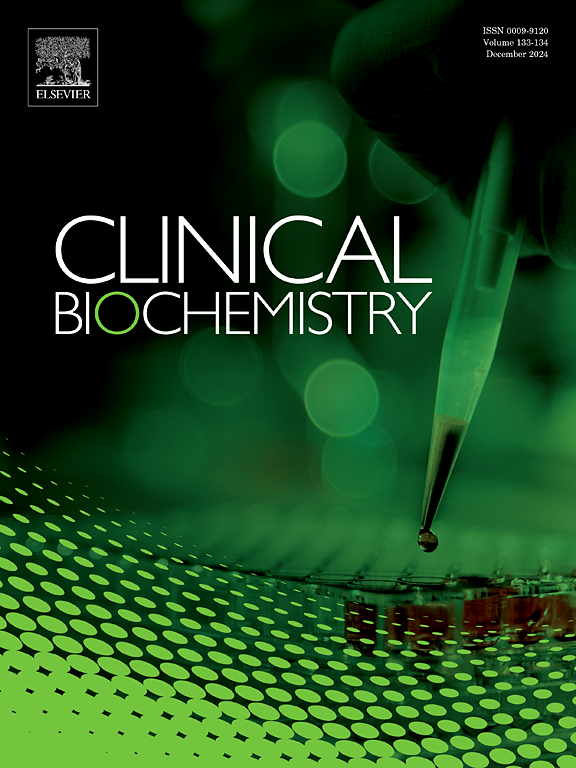Urine proteome uncovers common mechanisms between mucopolysaccharidosis types I and II
IF 2.1
3区 医学
Q2 MEDICAL LABORATORY TECHNOLOGY
引用次数: 0
Abstract
Background and aims
Mucopolysaccharidosis (MPS) types I and II are two types of rare lysosomal storage diseases, which lead to the accumulation of glycosaminoglycans due to the lack of the enzyme alpha-L-iduronidase and iduronate 2-sulfatase respectively. There are some similar pathogenic mechanisms and clinical phenotypes but also some specific minute manifestations between these two subtypes.
Materials and methods
We used tandem mass tag mass spectrometry to analyze the differential protein profiles in the urine of MPS I and MPS II patients, and then used parallel reaction monitoring (PRM) to verify our results. We detected the differentially expressed proteins (DEPs) of MPS I and MPS II compared with the control group separately.
Results
We focused on 227 DEPs which showed consistent changes in the urine of both MPS I and MPS II. PRM analysis verified that up-regulated hexosaminidase B and down-regulated hemoglobin alpha-1 showed significant difference in the urine of both subtypes. In addition, we found 391 DEPs by comparative analysis of MPS I and MPS II proteomes and found that DHRS2 contributed to the difference between the two subtypes by PRM verification.
Conclusion
We found that the urine of the two subtypes showed up-regulated HEXB and down regulated HBA1, while DHRS2 was significantly different in the urine of the two subtypes.

尿蛋白质组揭示了粘多糖病I型和II型之间的共同机制
背景与目的粘多糖病(mucopolysaccharidosis, MPS) I型和II型是两种罕见的溶酶体贮积性疾病,它们分别由于缺乏α - l -伊杜糖醛酸酶和伊杜糖酸2-硫酸酯酶而导致糖胺聚糖积累。这两种亚型之间有一些相似的致病机制和临床表型,但也有一些特定的微小表现。材料与方法采用串联质谱法对MPSⅰ型和MPSⅱ型患者尿液中的差异蛋白谱进行分析,并用平行反应监测(PRM)对结果进行验证。我们分别检测MPS I和MPS II与对照组的差异表达蛋白(DEPs)。结果227例DEPs在MPS I和MPS II的尿液中表现出一致的变化。PRM分析证实两亚型患者尿液中己糖氨基酶B上调和血红蛋白α -1下调均有显著差异。此外,我们通过MPS I和MPS II蛋白质组比较分析发现391个DEPs,并通过PRM验证发现DHRS2对两亚型之间的差异有贡献。结论我们发现两亚型患者尿液中HEXB表达上调,HBA1表达下调,而DHRS2在两亚型患者尿液中存在显著差异。
本文章由计算机程序翻译,如有差异,请以英文原文为准。
求助全文
约1分钟内获得全文
求助全文
来源期刊

Clinical biochemistry
医学-医学实验技术
CiteScore
5.10
自引率
0.00%
发文量
151
审稿时长
25 days
期刊介绍:
Clinical Biochemistry publishes articles relating to clinical chemistry, molecular biology and genetics, therapeutic drug monitoring and toxicology, laboratory immunology and laboratory medicine in general, with the focus on analytical and clinical investigation of laboratory tests in humans used for diagnosis, prognosis, treatment and therapy, and monitoring of disease.
 求助内容:
求助内容: 应助结果提醒方式:
应助结果提醒方式:


